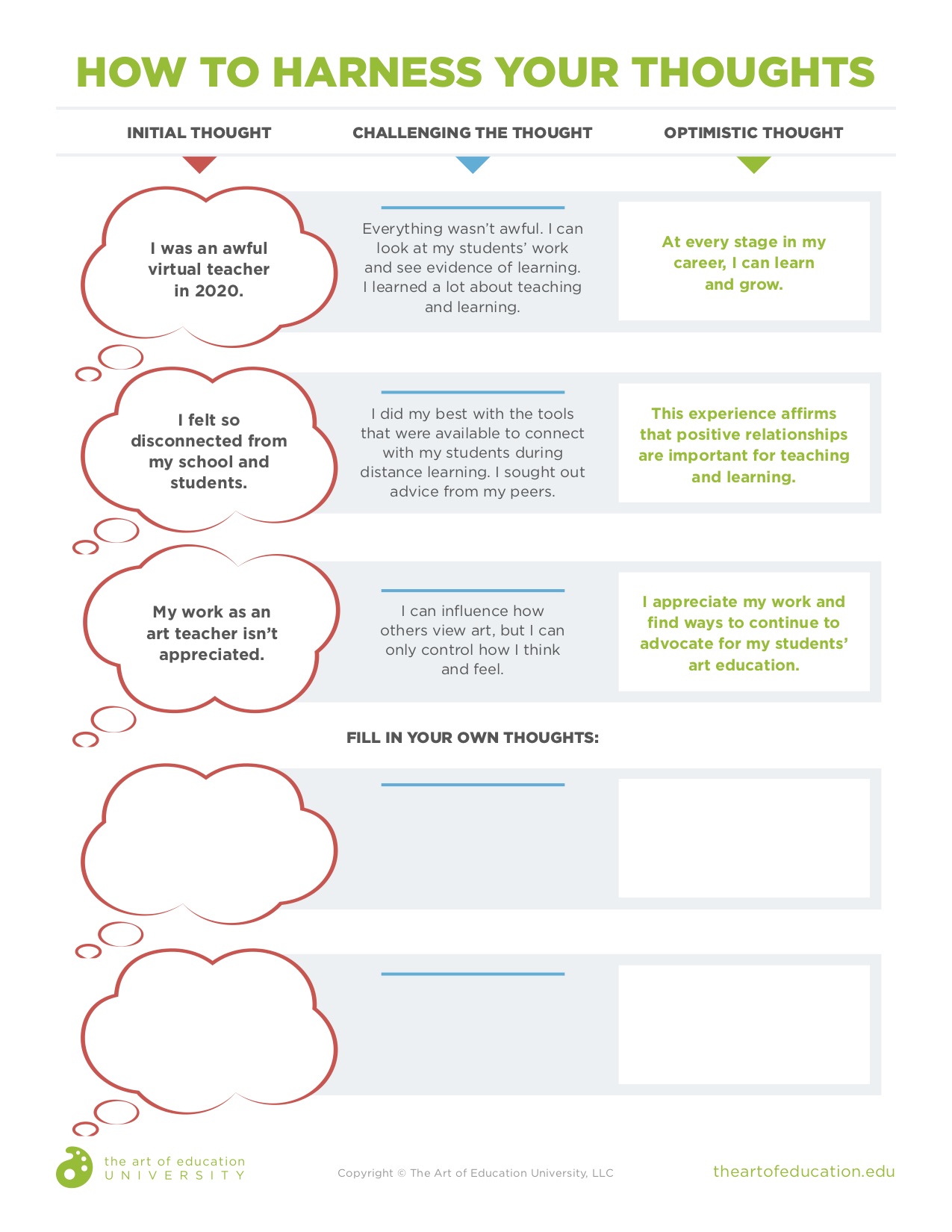“To live is to wrestle with despair, yet never allow despair to have the last word.”
-Cornell West

Rachel Hallquist, Director of K-12 Curriculum
It’s a massive understatement to say this school year has been unlike any other. We shifted our teaching practice unexpectedly and suddenly last spring. Events have been canceled indefinitely. We’ve lost loved ones. A global pandemic amplified the inequities in the world, especially in education. We continue to hear about the toll this last year has taken on our students’ academic and emotional wellbeing. The end of the year had us all looking back and wondering what happened.
In one of the most challenging years, I invite you to remain optimistic and hopeful about 2021 for yourself and your students.

Being optimistic matters for you.
Optimism may be linked with positive mental and physical health. Additionally, resiliency theory suggests optimism is critical in our ability to bounce back from challenges and setbacks in life. Karen Reivich, a resiliency researcher, has even called realistic optimism “the engine of resiliency.”
Being optimistic matters for your students.
Cultivating optimism may hold benefits for our students. Our thoughts and feelings, positive or negative, become our actions in the art classroom. We all know limiting beliefs and biases have a profound negative impact, but what impact do our hope and optimism have in schools?
According to the American Psychology Association, holding high expectations for students produces better outcomes. The APA found that when teachers expected a lot from their students, they gave them more:
- Emotional support
- Clearer feedback
- Attention
- Instruction
- Learning opportunities
In other words, when teachers have high expectations for students, they give them more of all the things we know lead to better learning outcomes: supportive relationships and high-quality learning opportunities. Whether we hold high or low expectations for students, this report suggests we get what we expect.
Optimism matters for your whole school.
Researcher Wayne Hoy also found a collective faculty’s academic optimism is directly related to students’ positive outcomes, even when controlling for socioeconomic status. They define academic optimism as a combination of:
- Efficacy: Teachers’ believe they can be effective at teaching.
- Trust: The faculty trusts that colleagues and families are honest, reliable, and want to participate in students’ learning positively.
- A focus on academics: The final component in academic optimism is a focus on teaching and learning.

When we focus on high-quality learning, are optimistic we can be effective, and feel like we can trust families, colleagues and students achieve better outcomes. This research on academic optimism suggests that things within our control (our thoughts, emotions, and actions) can make a positive difference.
What is optimism?
We might think of optimism as a fixed character trait, but it has more to do with how we explain the world and the experiences we have.
Optimism is not:
- Having a cheery personality.
- Always looking on the bright side.
- Overlooking dangerous or risky situations.
- Avoiding difficult conversations or painful emotions.
Optimism is about explaining the world in a way that is helpful. Are setbacks characteristic of your whole life or are they isolated to specific circumstances? Are challenges permanent or temporary?

Optimists often view setbacks as temporary and isolated. When a lesson flops for an optimistic teacher, they may say:
“This wasn’t a great lesson, I’ll finesse it and tomorrow will be better” (isolated and temporary). Or, “my students haven’t mastered this skill yet” (isolated and temporary).
True, the optimistic art teacher may reflect and learn from what didn’t work well, but they don’t perceive this setback as indicative of a permanent deficit in their teaching practice, their students, or their school.
Is optimism always the best approach?
Optimism is not always appropriate. In risky and dangerous situations, optimism is not the answer. If we see a student is using an art material dangerously, we don’t hope for the best; we remind them immediately how to be safe in the art room. If we notice a student is in danger of failing, we might modify our practice, reteach some concepts, develop a plan for them to make up work, and reach out to their family instead of hoping optimistically the student will initiate their own interventions. When optimism tips into the realm of shirking responsibilities, avoiding difficult conversations, denying challenging realities, and avoiding painful emotional experiences, optimism is the wrong approach.
However, for the daily challenges of being an art teacher, like lessons that flop, optimism might be one approach to help you bounce back and move forward.
Think like an optimist.
We often think of optimism as a fixed character trait, but even optimistic thinking can be cultivated. Here are a few ideas to help you get started:

- Don’t Believe Everything You Think: Just because you think something, doesn’t mean it’s true. You can start bringing in more optimism by examining your thoughts, challenging unhelpful ones, and changing your mind. What we may think is the truth is a judgment, an assumption, or a bias.
- Try Gratitude: In his book Flourish: A Visionary New Understanding of Happiness and Well-Being, Dr. Martin Seligman recommends the simple daily gratitude practice of identifying three things that went well and why. This helps you reflect on what is working and identify the positive resources you do have. You might even be able to leverage these resources to support your challenges.
- Practice Self-Compassion: Being able to cope with failure, disappointment, and setbacks are essential components of resiliency. Can you give yourself a break on some things? Try practicing learning from and letting go of your challenges.
Practicing optimism takes just that—practice. Use the following download to look at how you can shift some thoughts toward optimism. Add some of your own initial thoughts and re-write them for the better.
 Download Now!
Download Now!
There is no right or wrong way to look at the past twelve months. However, harnessing an optimistic perspective will shift you in the right direction for the year to come and beyond.
What is challenging about practicing optimism?
How do you share your own mindset with students?
Magazine articles and podcasts are opinions of professional education contributors and do not necessarily represent the position of the Art of Education University (AOEU) or its academic offerings. Contributors use terms in the way they are most often talked about in the scope of their educational experiences.





